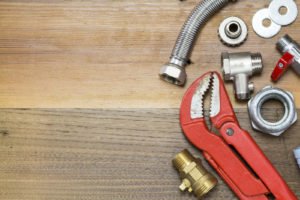Natural gas and LPG (liquid petroleum gas) are commonly used as fuels for heating, cooking, cutting, welding and often in the processing of products. While the majority of us will use gas in some form every day of our personal and professional lives, far too many are unaware of how dangerous it can be if not handled correctly.

David Holmes, Boiler Guide
In support of this year’s Gas Safety Week (which falls between 16-22 September), David Holmes, founder at Boiler Guide, outlines the serious dangers associated with unsafe gas appliances and how health and safety practitioners can minimise those risks in the workplace.
Gas safety: what are the potential risks?
Employers are legally required to comply with the relevant Gas Safety regulations to help ensure worker and public safety. If your organisation does not have a secure and safe gas supply with properly functioning appliances, you are putting the safety of your personnel at risk, not to mention the potential reputational and financial damage a gas leak could cause. In addition, a business which fails to carry out important checks on gas appliances could invalidate their property’s insurance arrangements.
There are several risks associated with the usage of poorly maintained, damaged or malfunctioning gas appliances, pipes or storage cylinders. From burns caused by direct contact with overheating appliances to fires, explosions and potentially lethal carbon monoxide (CO) poisoning, the consequences can be catastrophic.
Gas leaks
Poor maintenance of gas pipes, cylinders or appliances can cause gas leaks. Gas is highly flammable and as such the smallest flame or spark of static electricity could lead to fires or, in extreme cases, explosions.
Carbon monoxide poisoning
 On average, carbon monoxide poisoning causes 50 deaths each year as well as up to 4,000 medical visits. Carbon monoxide is a colourless and odourless gas which is produced when gas does not burn properly or when there is not adequate ventilation. Improperly maintained or poorly fitted gas appliances may emit carbon monoxide which is why it’s essential to have all gas work carried out and checked regularly by a competent person.
On average, carbon monoxide poisoning causes 50 deaths each year as well as up to 4,000 medical visits. Carbon monoxide is a colourless and odourless gas which is produced when gas does not burn properly or when there is not adequate ventilation. Improperly maintained or poorly fitted gas appliances may emit carbon monoxide which is why it’s essential to have all gas work carried out and checked regularly by a competent person.
When we inhale carbon monoxide it attaches to the haemoglobin in our bloodstream which reduces how much oxygen the blood can carry. This can have serious consequences within a matter of hours including brain damage or even death.
Because carbon monoxide is colourless and odourless many people are unaware that there is a leak unless they are vigilant and can recognise the early symptoms of carbon monoxide poisoning:
- Tiredness/drowsiness;
- Headaches;
- Nausea;
- Loss of consciousness;
- Chest and stomach pains.
Carbon monoxide leaks can also be detected by a carbon monoxide detector which will sound an alarm when carbon monoxide is in the air.
If you suspect you have a gas or carbon monoxide leak…
- Open all windows and doors;
- Shut off the gas supply at the meter;
- Evacuate everyone from the building;
- Call the Gas Emergency Freephone Number 0800 111 999;
- Ensure that investigations and repair work is carried out by a competent Gas Safe engineer.
If you have any suspicion that an employee or employees have been exposed to carbon monoxide, turn off all gas appliances, take the affected staff to a well-ventilated area and call 999.
DO NOT:
- Use electrical equipment;
- Switch lights on/off;
- Enter cellars or go into confined spaces below ground;
- Light matches or any naked flames.
Finding a competent Gas Safe engineer
 In order to install, service or fix a gas appliance, a person must be competent. In the UK, this means that they must be on the Gas Safe Register. In some cases, they may also need to have additional qualifications to enable them to work on specific appliances or in commercial settings.
In order to install, service or fix a gas appliance, a person must be competent. In the UK, this means that they must be on the Gas Safe Register. In some cases, they may also need to have additional qualifications to enable them to work on specific appliances or in commercial settings.
Every Gas Safe registered person is issued with a unique ID card featuring their photo, company name, their business registration number and personal licence number, a security hologram and start/expiry dates so you can check the ID is currently valid. You can check the type of work they are qualified to do by looking on the back of the card.
Alternatively, check the Gas Safe Register.
If the Gas Safe engineer finds an issue during a safety check you will be unable to use the equipment until it has been fixed and declared safe by a Gas Safe engineer. Using or reconnect an appliance that you have been informed is unsafe is against the law and incredibly dangerous.
Responsibilities of health and safety practitioners
- Make sure that every gas appliance and flue is safety checked and serviced annually. If you are starting a lease on new premises, check when gas appliances were installed and when the last safety checks were carried out.
- Ensure that all installation, maintenance and safety checks are carried out by a Gas Safe registered engineer and that records of each check are kept for at least two years.
- Ensure a carbon monoxide detector is installed on every floor of your workplace and check batteries regularly.
- Before an engineer carries out any gas work, check their ID card AND that they are currently on the Gas Safe Register.
- Ensure air vents on gas appliances are unblocked and well ventilated.
- Educate all employees about the signs, symptoms and risks associated with gas and carbon monoxide leaks and carbon monoxide poisoning. For example:
- Staining or discolouration around gas appliances;
- Carbon monoxide poisoning symptoms (e.g. headaches, nausea, tiredness) when at work but not when they leave;
- Gas appliances should always burn with a blue flame; an orange, yellow or red flame is a cause for concer.
- Carry out a risk assessment for any gas usage and storage appliances to identify potential hazards, controls and policies that are needed.
Approaches to managing the risks associated Musculoskeletal disorders
In this episode of the Safety & Health Podcast, we hear from Matt Birtles, Principal Ergonomics Consultant at HSE’s Science and Research Centre, about the different approaches to managing the risks associated with Musculoskeletal disorders.
Matt, an ergonomics and human factors expert, shares his thoughts on why MSDs are important, the various prevalent rates across the UK, what you can do within your own organisation and the Risk Management process surrounding MSD’s.


 On average,
On average,  In order to install, service or fix a gas appliance, a person must be competent. In the UK, this means that they must be on the Gas Safe Register. In some cases, they may also need to have additional qualifications to enable them to work on specific appliances or in commercial settings.
In order to install, service or fix a gas appliance, a person must be competent. In the UK, this means that they must be on the Gas Safe Register. In some cases, they may also need to have additional qualifications to enable them to work on specific appliances or in commercial settings.